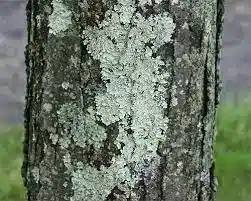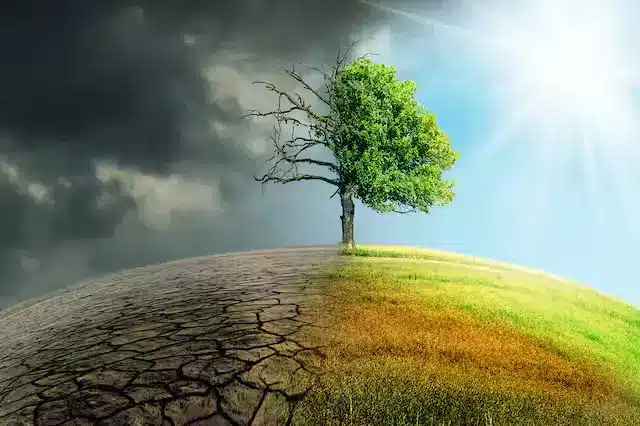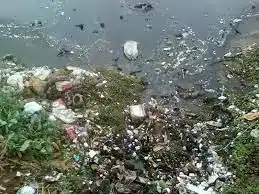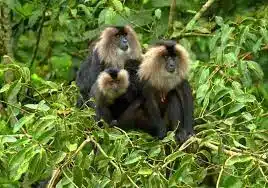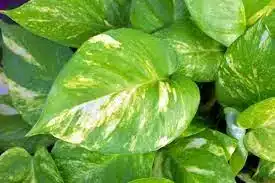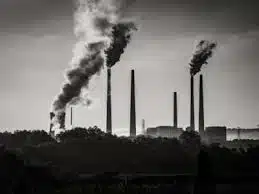Know about Ramsar Sites
- Wetlands of international importance are known as Ramsar Sites.
- Ramsar Convention: The Convention on Wetlands is an intergovernmental treaty that provides the framework for national action and international cooperation for the conservation and wise use of wetlands and their resources.
- It is named after the Iranian city of Ramsar, on the Caspian sea, where the treaty was signed on 2 February 1971.
- Known officially as ‘the wetlands of International Importance, especially as Waterfowl Habitat’ (or, more recently, just ‘the Convention on Wetlands’), it came into force in 1975.
- Number of Contracting Parties: 171
- 89 sites in India are protected by the Ramsar convention.
New Ramsar Sites in India 2025
- On February 2, 2025, four new sites were added to the list, taking the total Ramsar sites in India to 89.
- The new Ramsar sites are:
- Sakkarakottai Bird Sanctuary (Tamil Nadu)
- Therthangal Bird Sanctuary (Tamil Nadu)
- Khecheopalri Wetland (Sikkim)
- Udhwa Lake (Jharkhand)
With this, India became the country with the highest number of Ramsar sites in Asia and the third-highest globally, after the United Kingdom (176) and Mexico (144). Now, India has a total of 1301 wetlands, which include 89 Ramsar Wetlands and 114 Significant Wetlands.
List of 89 Ramsar Sites In India
| S.No. | Ramsar Site | State | Year |
| 1 | Kolleru Lake | Andhra Pradesh | 2002 |
| 2 | Deepor Beel | Assam | 2002 |
| 3 | Kanwar (Kabar) Taal | Bihar | 2020 |
| 4 | Nanda Lake | Goa | 2022 |
| 5 | Khijadia WLS | Gujarat | 2021 |
| 6 | Nalsarovar BS | Gujarat | 2012 |
| 7 | Thol Lake | Gujarat | 2021 |
| 8 | Wadhvana Wetland | Gujarat | 2021 |
| 9 | Bhindawas WLS | Haryana | 2021 |
| 10 | Sultanpur NP | Haryana | 2021 |
| 11 | Chandra Taal | Himachal Pradesh | 2005 |
| 12 | Pong Dam Lake | Himachal Pradesh | 2002 |
| 13 | Renuka Lake | Himachal Pradesh | 2005 |
| 14 | Ranganathituu BS | Karnataka | 2022 |
| 15 | Magadi Kere Conservation Reserve | Karnataka | 2024 |
| 16 | Ankasamudra Bird Conservation Reserve | Karnataka | 2024 |
| 17 | Aghanashini Estuary | Karnataka | 2024 |
| 18 | Ashtamudi Wetland | Kerala | 2002 |
| 19 | Sasthamkotta Lake | Kerala | 2002 |
| 20 | Vembanad-Kol Wetland (Longest Lake in India) | Kerala | 1905 |
| 21 | Bhoj Wetland | Madhya Pradesh | 2002 |
| 22 | Sakhya Sagar | Madhya Pradesh | 2022 |
| 23 | Sirpur wetland | Madhya Pradesh | 2022 |
| 24 | Yashwant Sagar | Madhya Pradesh | 2022 |
| 25 | Lonar Lake (Impact Crater Lake) | Maharashtra | 2020 |
| 26 | Nandur Madhameshwar | Maharashtra | 2019 |
| 27 | Thane Creek | Maharashtra | 2022 |
| 28 | Loktak Lake | Manipur | 1990 |
| 29 | Pala Wetland | Mizoram | 2021 |
| 30 | Ansupa Lake | Odisha | 2021 |
| 31 | Bhitarkanika Mangroves | Odisha | 2002 |
| 32 | Chilika Lake (Oldest Ramsar Site in India) | Odisha | 1981 |
| 33 | Hirakud Reservoir | Odisha | 2021 |
| 34 | Satkosia Gorge | Odisha | 2021 |
| 35 | Tampara Lake | Odisha | 2021 |
| 36 | Beas CnR | Punjab | 2019 |
| 37 | Harike Wetland | Punjab | 1990 |
| 38 | Kanjli Wetland | Punjab | 2002 |
| 39 | Keshopur-Miani CmR | Punjab | 2019 |
| 40 | Nangal WLS | Punjab | 2019 |
| 41 | Ropar Wetland | Punjab | 2002 |
| 42 | Keoladeo National Park | Rajasthan | 1981 |
| 43 | Sambhar Lake | Rajasthan | 1990 |
| 44 | Chitrangudi BS | Tamil Nadu | 2021 |
| 45 | Gulf of Mannar Marine BR | Tamil Nadu | 2022 |
| 46 | Kanjirankulam BS | Tamil Nadu | 2022 |
| 47 | Karikili BS | Tamil Nadu | 2022 |
| 48 | Koonthankulam BS | Tamil Nadu | 2021 |
| 49 | Pallikaranai Marsh Reserve Forest | Tamil Nadu | 2022 |
| 50 | Pichavaram Mangrove | Tamil Nadu | 2022 |
| 51 | Point Calimere WLS & BS | Tamil Nadu | 2002 |
| 52 | Suchindram Theroor Wetland Complex | Tamil Nadu | 2022 |
| 53 | Udhayamarthandapuram BS | Tamil Nadu | 2022 |
| 54 | Vaduvur BS | Tamil Nadu | 2022 |
| 55 | Vedanthangal BS | Tamil Nadu | 2022 |
| 56 | Vellode BS | Tamil Nadu | 2022 |
| 57 | Vembannur Wetland Complex | Tamil Nadu | 2022 |
| 58 | Karaivetti Bird Sanctuary | Tamil Nadu | 2024 |
| 59 | Longwood Shola Reserve Forest | Tamil Nadu | 2024 |
| 60 | Rudrasagar Lake | Tripura | 2005 |
| 61 | Hokera Wetland | UT of JK | 2005 |
| 62 | Hygam Wetland CnR | UT of JK | 2022 |
| 63 | Shallbugh Wetland CnR | UT of JK | 2022 |
| 64 | Surinsar-Mansar Lakes | UT of JK | 2005 |
| 65 | Wular Lake | UT of JK | 1990 |
| 66 | Tso Kar (High Altitude Ramsar Site) | UT of Ladakh | 2020 |
| 67 | Tsomoriri (High Altitude Ramsar Site) | UT of Ladakh | 2002 |
| 68 | Bakhira WLS | Uttar Pradesh | 2021 |
| 69 | Haiderpur Wetland | Uttar Pradesh | 2021 |
| 70 | Nawabganj BS | Uttar Pradesh | 2019 |
| 71 | Parvati Arga BS | Uttar Pradesh | 2019 |
| 72 | Saman BS | Uttar Pradesh | 2019 |
| 73 | Samaspur BS | Uttar Pradesh | 2019 |
| 74 | Sandi BS | Uttar Pradesh | 2019 |
| 75 | Sarsai Nawar Jheel | Uttar Pradesh | 2019 |
| 76 | Sur Sarovar (Keetham Lake) | Uttar Pradesh | 2020 |
| 77 | Upper Ganga River (Brijghat to Narora) | Uttar Pradesh | 2005 |
| 78 | Asan Barrage | Uttarakhand | 2020 |
| 79 | East Kolkata Wetlands | West Bengal | 2002 |
| 80 | Sundarban Wetland (Largest Ramsar Site in India) | West Bengal | 2019 |
| 81 | Nagi Bird Sanctuary | Bihar | 2024 |
| 82 | Nakti Bird Sanctuary | Bihar | 2024 |
| 83 | Kazhuveli Bird Sanctuary | Tamil Nadu | 2024 |
| 84 | Nanjarayan Bird Sanctuary | Tamil Nadu | 2024 |
| 85 | Tawa Reservoir | Madhya Pradesh | 2024 |
| 86 | Therthangal Bird Sanctuary | Tamil Nadu | 2025 |
| 87 | Sakkarakottai Bird Sanctuary | Tamil Nadu | 2025 |
| 88 | Khecheopalri Wetland | Sikkim | 2025 |
| 89 | Udhwa Lake | Jharkhand | 2025 |
Important facts on Ramsar sites in India :
- Largest Ramsar sites in India: Sundarban
- Area wise : ( Sundarban > Vembanad > Chilka >….>Renuka)
- Smallest Ramsar Sites in India: Renuka Wetland
- Oldest Ramsar sites in India: Chilka Lake(1981), Keoladeo Ghana NP(1981).
- Total number of Ramsar sites in India: 89.
- Which Indian state has the most number of Ramsar Sites? Answer: Tamilnadu (20) followed by Uttar Pradesh (10).
- Number of wetlands under Montreux Record: 2.
Montreux Record
Montreux Record under the Convention is a register of wetland sites on the List of Wetlands of International Importance where changes in ecological character have occurred, are occurring, or are likely to occur as a result of technological developments, pollution, or other human interference.
- It is maintained as part of the Ramsar List.
- The Montreux Record was established by Recommendation of the Conference of the Contracting Parties (1990).
- Sites may be added to and removed from the Record only with the approval of the Contracting Parties in which they lie.
- Currently, two wetlands of India are in Montreux record: Keoladeo National Park (Rajasthan) and Loktak Lake (Manipur).
- Chilka lake (Odisha) was placed in the record but was later removed from it.
Definition of Wetlands
Wetlands are land areas that are saturated or flooded with water either permanently or seasonally.
The Ramsar Convention definition for wetlands includes marshes, floodplains, rivers and lakes, mangroves, coral reefs and other marine areas no deeper than 6 metres at low tide, as well as human-made wetlands such as waste-water treatment ponds and reservoirs.
According to The Wetlands (Conservation and Management) Rules of 2017, the Indian government’s definition of wetlands does not include river channels, paddy fields, or other areas utilized for commercial activities.
Wetlands, according to the Environment Ministry, are an “area of marsh, fen, peatland or water; whether natural or artificial, permanent or temporary, with water that is static or flowing, fresh, brackish or salt, including areas of marine water the depth of which at low tide does not exceed six metres, but does not include river channels, paddy fields, human-made water bodies/ tanks specifically constructed for drinking water purposes and structures specifically constructed for aquaculture, salt production, recreation and irrigation purposes.”
- Wetlands are regulated under the Wetlands (Conservation and Management) Rules, 2017.
- The 2010 version of the Rules provided for a Central Wetland Regulatory Authority; the 2017 Rules replace it with state-level bodies and created a National Wetland Committee, which functions in an advisory role.
- The newer regulations removed some items from the definition of “wetlands” including backwaters, lagoons, creeks, and estuaries.
- India has 19 types of wetlands whereas Gujarat has the maximum area followed by Andhra Pradesh, Uttar Pradesh and West Bengal.
Wetland Day
- Wetland day: on February 2 each year
- To raise global awareness about the vital role of wetlands for people and our planet
- To mark the day of the convention on wetlands was adopted in the Iranian city of Ramsar in 1971.
- India is a party to the convention since 1981.
- India ratified the Ramsar Convention on the 1st of February, 1982.
- It emphasizes the importance of wetlands as a “source of freshwater and encourages action to restore them and stop their loss”.

Also, refer :
- Download the pdf of Important MCQs From the History Of Ancient India
- List Of Important Inscriptions In India
- Environmental organizations of India
- Important MCQs On Air Pollution
- Important Multiple Choice Questions On Air Pollution

